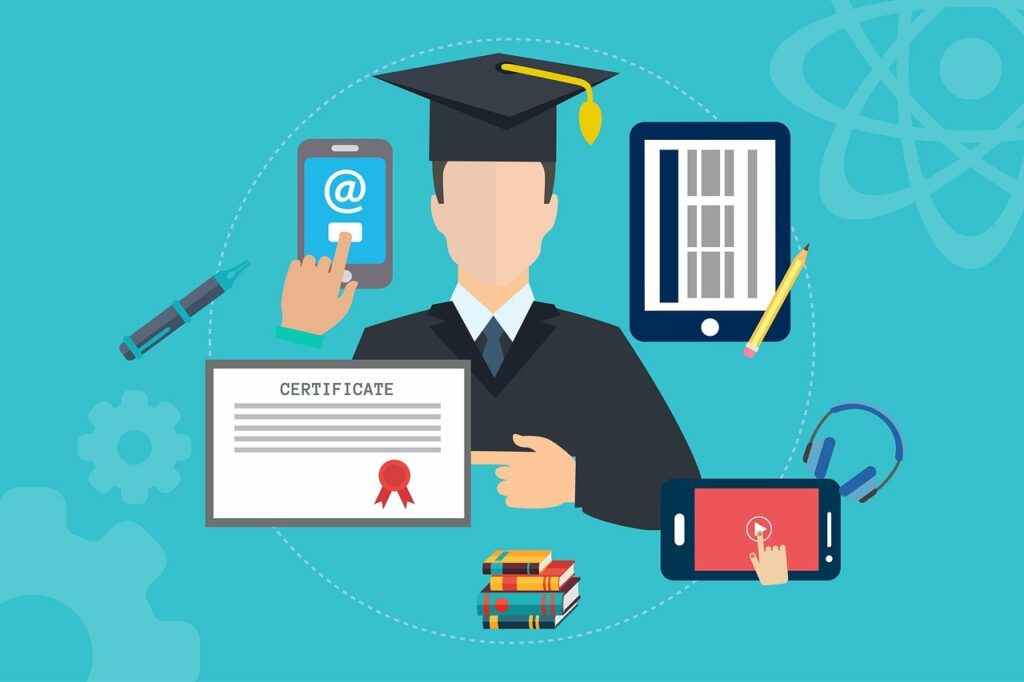The evolution of online education has brought new dimensions to learning, reshaping how knowledge is imparted and absorbed. Whether you’re attending an online school for high school, engaging in adult learning courses, or exploring early childhood education, one undeniable element stands out: the transformative role of video in the educational experience.
Online education is a means to both professional and personal development, not just a convenience. For high school students, online platforms such as No Nonsense Tutoring offer tailored curriculums, flexible schedules, and access to resources that traditional classrooms might lack. Adult learners, on the other hand, find online education invaluable for upskilling, transitioning careers, or pursuing lifelong learning goals without the limitations of location or rigid timetables.
In early childhood education, online learning is shaping young minds through interactive modules designed to enhance cognitive and social development. Emerging trends like gamified learning, AI-driven teaching tools, and personalized content delivery are setting the stage for a future where learning is both engaging and effective.
The Rise of Video in Online Learning
Amid these innovations, video has emerged as a cornerstone of online education. Its impact on different learning styles—visual, auditory, and kinesthetic—is profound, offering diverse learners a medium that caters to their preferences. The rise of AI-powered tools, such as educational video makers, further amplifies this potential by making video creation accessible to educators and learners alike.
Benefits of Video for High School Learning
If you’re a high school student, chances are you’ve encountered video lectures, tutorials, or animations that break down complex subjects into manageable chunks. Videos allow you to revisit challenging topics at your own pace, ensuring better retention. Visual learners benefit significantly from graphical explanations and animations, while auditory learners absorb information through clear, articulate narration.
Moreover, videos provide real-world context. For instance, a science lesson about chemical reactions can include a visually engaging experiment demonstration, helping you connect theory with practice. This dynamic approach not only deepens your understanding but also keeps you engaged in the learning process.
How Video Enhances Adult Learning
For adults, video content offers unparalleled flexibility and depth. Whether you’re pursuing a certification, learning a new language, or acquiring technical skills, video-based modules deliver instruction in a concise and engaging format. An AI-powered educational video maker enables instructors to create tailored videos that address specific learning objectives, making the content more relevant to your goals.
Furthermore, video fosters collaboration in online learning environments. You can participate in live webinars, group discussions, and video-based assignments, all of which simulate real-world interactions. This approach not only strengthens your grasp of the material but also develops critical soft skills like communication and teamwork.
Shaping Early Childhood Education
In early childhood education, video content plays a pivotal role in fostering creativity, curiosity, and foundational skills. Interactive videos captivate young learners through colorful animations, playful characters, and engaging storytelling. For kinesthetic learners, activities embedded in video lessons—like dance or hands-on crafts—encourage active participation and enhance motor skills.
AI’s inclusion in the Production of Video Content
Artificial intelligence has revolutionized how videos are created and consumed. Tools like educational video makers enable teachers and institutions to produce high-quality content from simple text inputs. This technology democratizes video production, ensuring that educators can deliver compelling lessons regardless of their technical expertise.
AI-powered video apps also enhance accessibility. Features like automated captions, translations, and voiceovers ensure that learners from diverse backgrounds can engage with the content. These innovations are particularly beneficial for individuals with disabilities, as they make educational material inclusive and equitable.
Why Video Works Across Learning Styles
The success of video in online education stems from its versatility. Whether you’re a visual, auditory, or kinesthetic learner, video has something to offer:
- Visual Learners: Videos use images, graphs, and animations to convey complex ideas, making abstract concepts tangible and memorable.
- Auditory Learners: Narration and dialogue in videos provide clarity, reinforcing comprehension through well-articulated explanations.
- Kinesthetic Learners: Interactive elements like pause-and-play features or embedded exercises allow you to actively engage with the content.
This adaptability ensures that video is an effective medium for delivering information across various educational contexts, from theoretical lessons to practical demonstrations.
Trends Shaping the Future of Video-Based Learning
The future of video in online education is bright, with several trends leading the way:
- Microlearning: Short, focused video lessons cater to busy schedules and improve retention.
- Interactive Videos: Quizzes, polls, and branching scenarios within videos make learning immersive and engaging.
- Personalized Content: AI algorithms analyze your progress and preferences to deliver customized video recommendations.
- Virtual and Augmented Reality: VR and AR videos create immersive environments, simulating real-world experiences for practical learning.
The Broader Impact of Video on Education
As online learning continues to evolve, the role of video in shaping educational experiences cannot be overstated. High school students can explore topics in greater depth, adult learners can upskill efficiently, and young children can develop foundational skills in an engaging environment. AI-driven tools like educational video makers are bridging the gap between educators and learners, enabling the creation of content that resonates with diverse learning styles.
Whether you’re preparing for exams, advancing your career, or nurturing a child’s curiosity, video serves as a powerful ally in the journey of lifelong learning. By harnessing its potential, you can unlock new opportunities, deepen your understanding, and transform the way you approach education.
In conclusion, as we embrace the future of online learning, integrating video content tailored to individual needs will be crucial in ensuring educational success for all.

